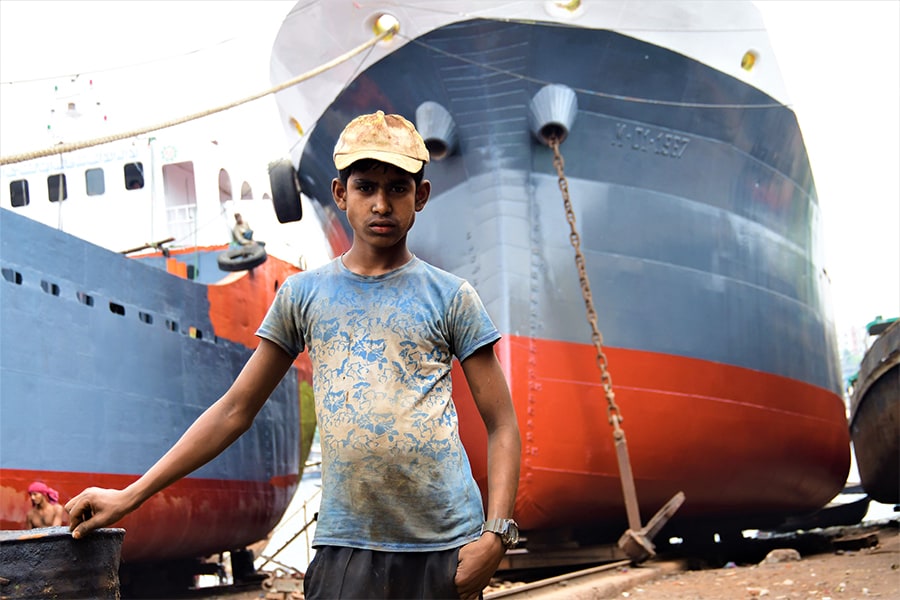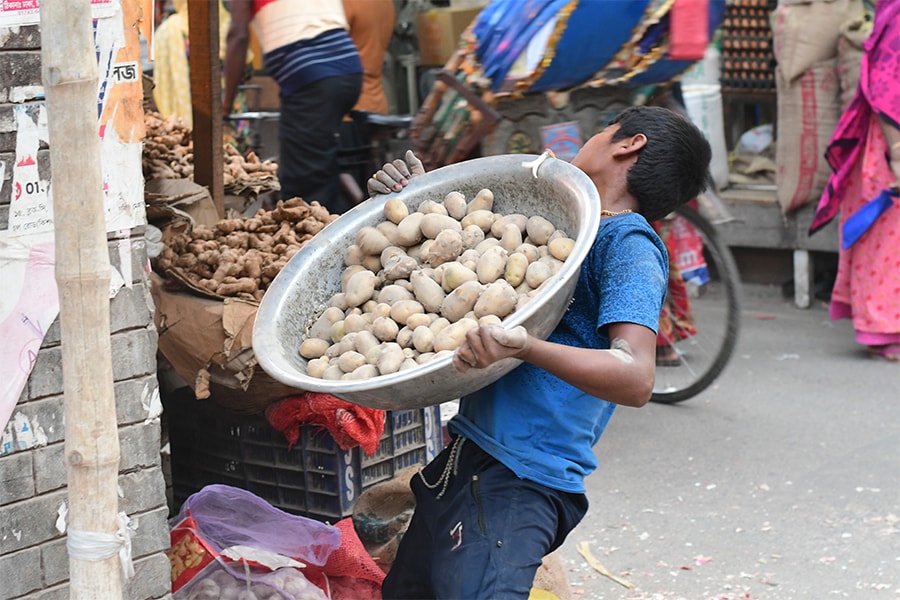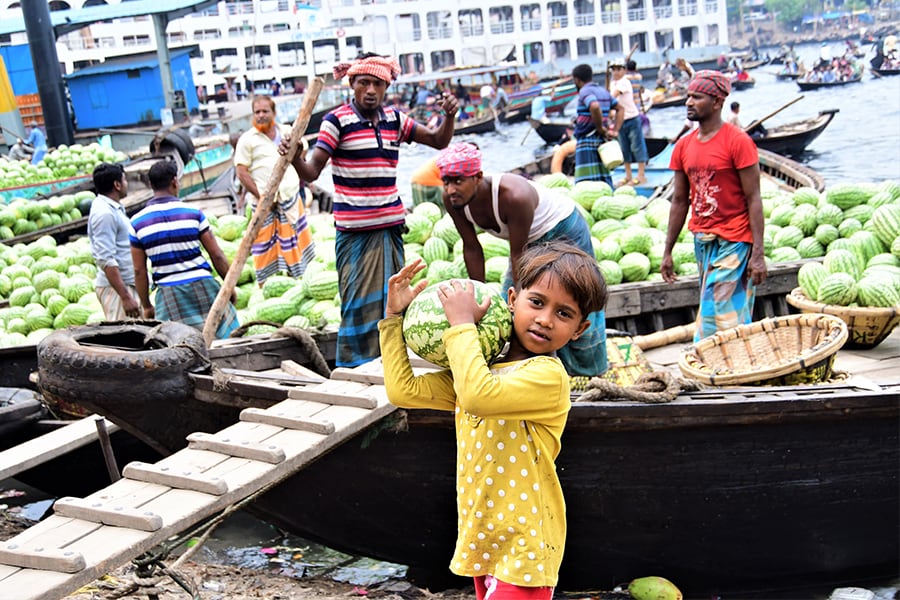
Climate disasters force Bangladesh children from classrooms to work
As families are forced to migrate after disasters, many children leave school never to go back again, raising the school dropout rate to over 17 percent in 2021, while UNICEF says 1.7 million children of the country are now working
 Alamin, 12, whose family lost their home to climate change-driven erosion, works as part of a shipbreaking crew in Keraniganj, close to Dhaka, Bangladesh, March 22, 2022. Image: Thomson Reuters Foundation/Mosabber Hossain
Alamin, 12, whose family lost their home to climate change-driven erosion, works as part of a shipbreaking crew in Keraniganj, close to Dhaka, Bangladesh, March 22, 2022. Image: Thomson Reuters Foundation/Mosabber Hossain
DHAKA, May 9 (Thomson Reuters Foundation) - Twelve-year-old Alamin's house rested on the bank of the Ilsha river in southern Bangladesh until last year, when the surging river eroded it and the family's farmland away, forcing them to flee to a slum in Keraniganj, close to the capital Dhaka.
Now Alamin - whose father died of cancer a couple years back - works on a shipbreaking crew and his mother cooks for the workers. Together they earn just enough to feed and house themselves and Alamin's two younger siblings, now 3 and 5.
"Once we were solvent. My husband earned from our cultivable land and my son was reading in a local primary school," said Amina Begum, Alamin's mother.
But after losing their property to the river and their savings to failed cancer treatments, work is all Alamin can now expect, she lamented.
As more extreme weather drives worsening flooding, erosion and storms in low-lying Bangladesh, thousands of families like hers are moving to the slums of Dhaka.









